FIREWOMAN is a documentary that peers into the lives of five charismatic firewomen and follows their work from showcasing the challenges of rookies to life on the force as full-time squad member. Equipped as a firefighter and sitting in the fire truck, the director Louise Leroux spends six months documenting their lives through the exciting and dangerous world of firefighting!
“FIREWOMAN was made in the tradition of cinéma vérité filmmaking, a fly on the wall type of approach with a clear narrative thread, no narration.” – Director Louise Leroux
Key Cast & Crew: Nancy Cloutier, Mélanie Drainville, Justine Forget, Anik St-Pierre, Karine Van de Walle; Richard Blackburn (co-writer/producer), and Louise Leroux (co-writer/director).
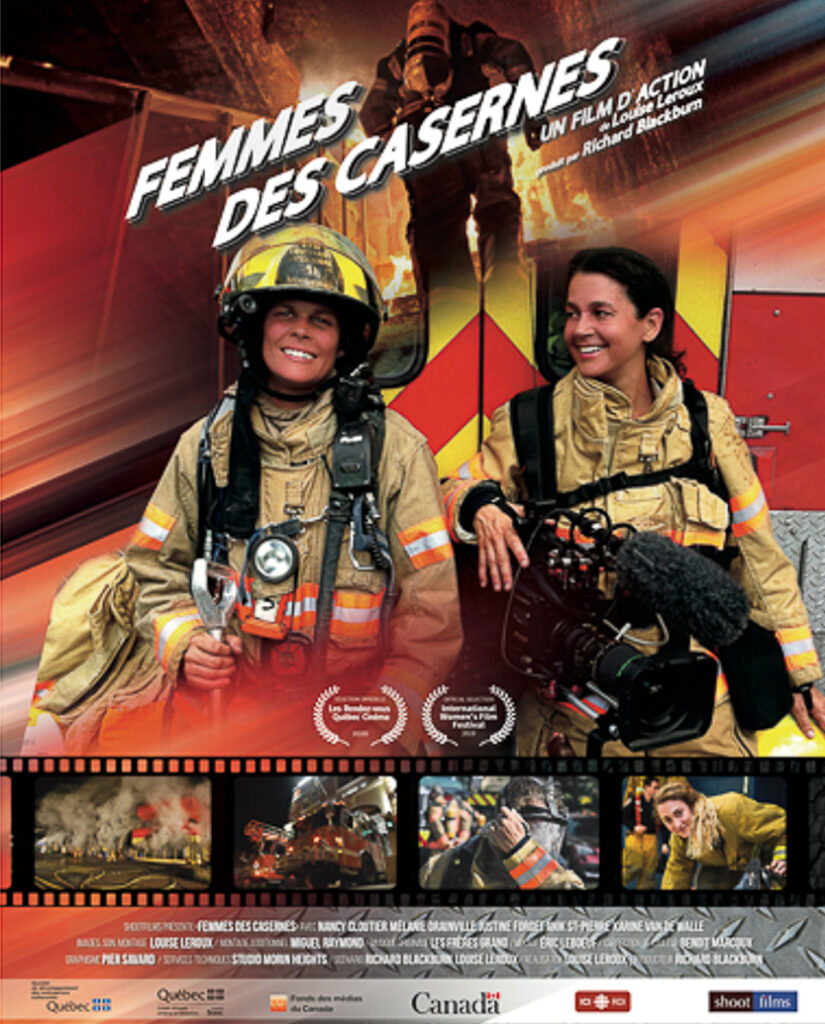
Questions by Kaylene Peoples | Responses by Filmmaker Louise Leroux
Tell me a little about your documentary and what inspired you to make FIREWOMAN?
The film follows the work of five charismatic female firefighters and showcase two stages in a firefighter’s trajectory: the challenges of newbies who try to get hired by the Montreal Fire Department and life on the force as full-time squad members. The women themselves, their strength of character, dedication and professionalism is what inspired me. Initially, I wanted to do a film on firefighter’s training (which is intense), but then I met Karine – 1 of 3 women amongst 140 students at the firefighter’s Academy. I found out there were barely three percent of firefighters that were female in Canada. I also discovered how difficult it was for these women to train, get hired, and strive in a male-dominated environment. They clearly deserved a film.
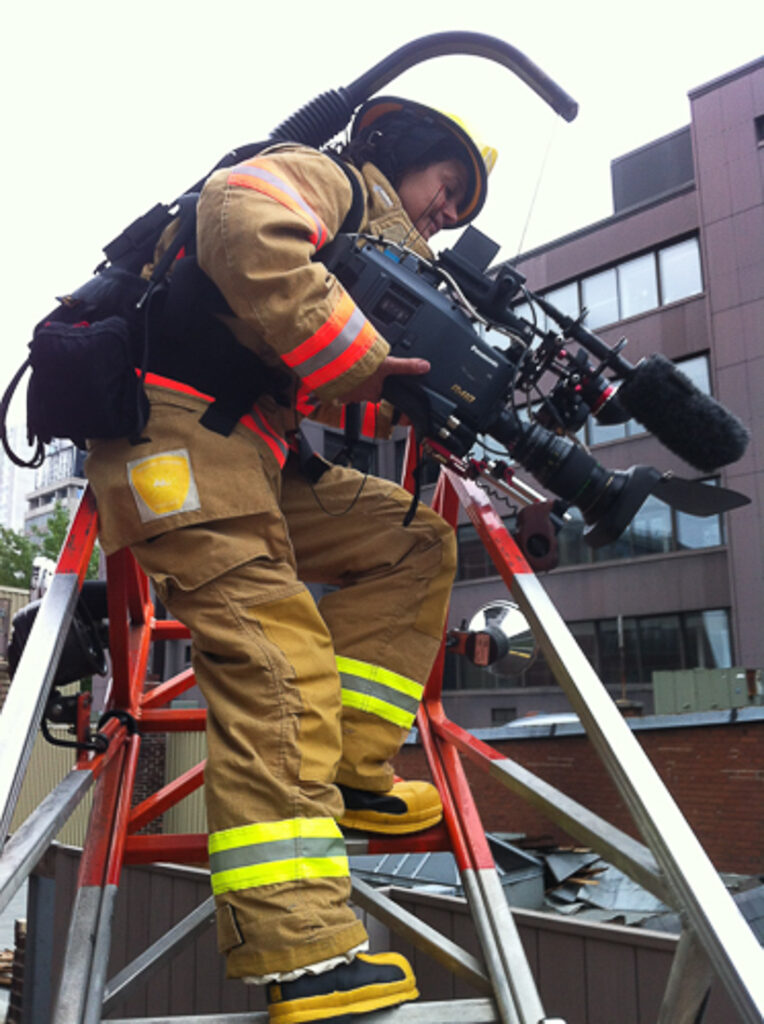
How long did it take to complete it? What was it shot on?
The project was filmed over a period of four years, which allowed me to follow the character’s story development. It was shot on a Panasonic HPX3000. We also had four small HD fireproof cameras (Firecam) mounted on the helmet of our characters.
Documentaries can be a challenging medium. Tell me about the filmmaking process. Let’s talk about some of the people involved.
My co-writer and producer Rick Blackburn was adamant that I shoot the film myself. The Montreal Fire Department could only free one seat for our crew in the fire truck, so either I gave it to the cameraman or I did my own camerawork. Rick strongly encouraged me to take the step to becoming a camerawoman. He believed it would make for a better movie, and he was right (as usual!). He rigged the equipment (camera, sound, lighting) on an Easyrig harness that I could wear on top of the bunker (the firefighter’s uniform). This way I was completely autonomous. I shot the whole film like that, by myself, which proved to be an asset. Being alone, I was able to blend in. The characters got used to me, and to the camera. I was self-contained, could go everywhere and . . . most importantly, I could keep up with the characters.
At first, the film was commissioned to be an hour long, but we had such good material and so much of it, Rick insisted that we make it feature length. He also made sure I kept my perspective throughout the editing. If it wasn’t for him, some of the best scenes (the train scene for example) wouldn’t have made it into the movie.
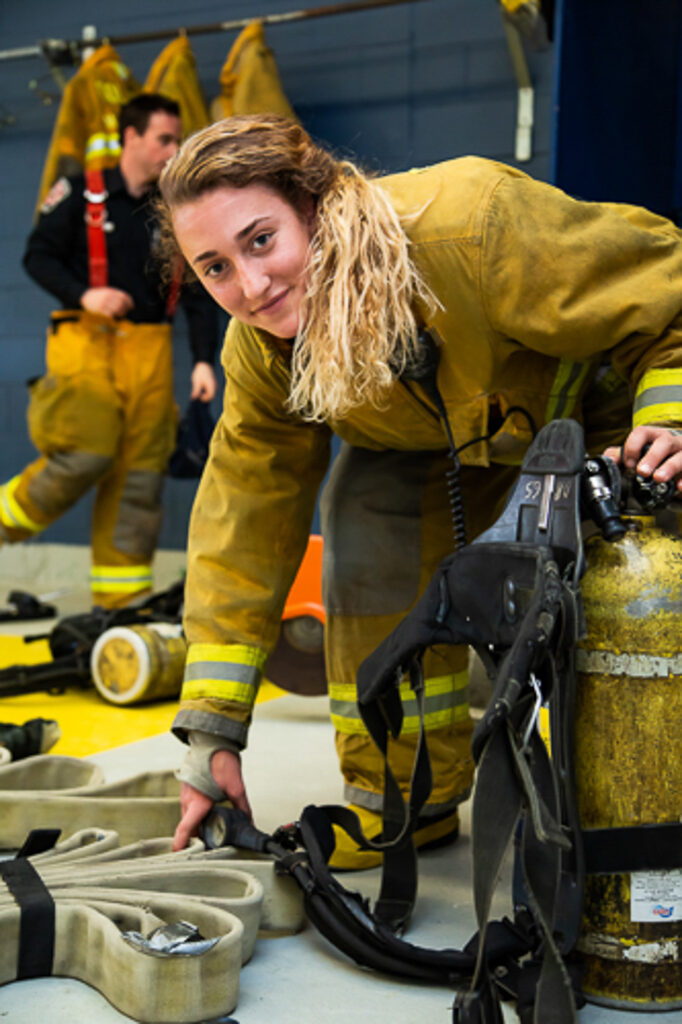
Tell me about who was involved, and particularly your key players.
The Montreal Fire Department was a key player. We negotiated access to their employees and fire halls, which they granted us under a few conditions – the most important being we respect their safety measures. Other than that, they were supportive but stayed out of the content, which means we had carte blanche. Another key player was Anik St-Pierre, an advocate for female firefighter’s rights who opened a lot of doors for us during production. She is an important character in the film. And of course, all five characters whose generosity was outstanding. Their trust in us was something we cherished and never took for granted. There was a lot at stake for them, knowing that they could be ostracized by their male coworkers once the film would be released.
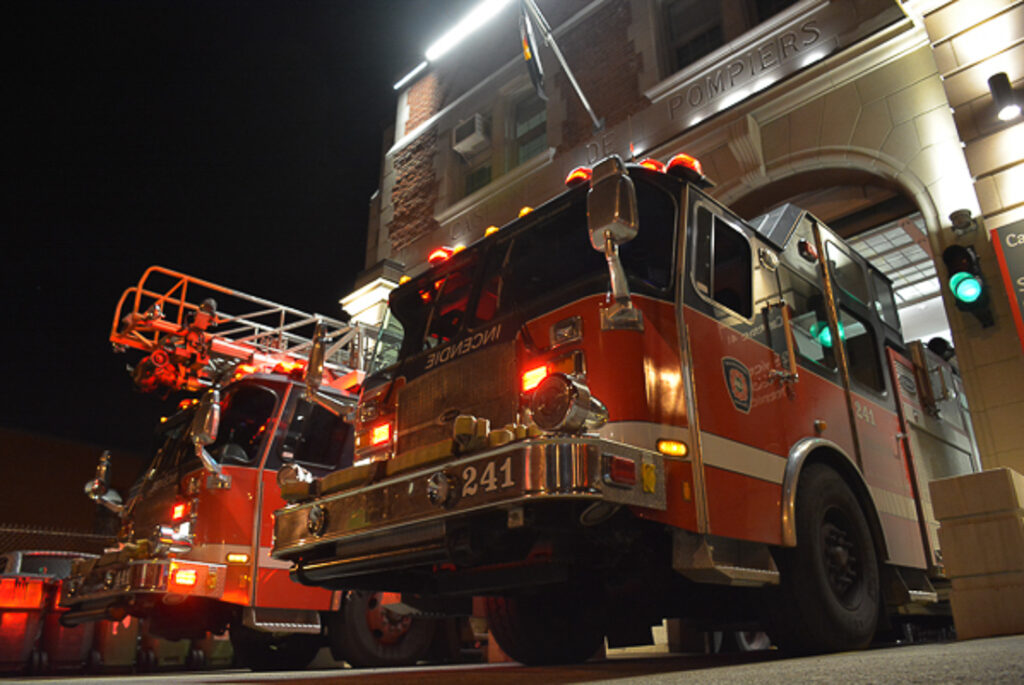
What was your experience on FIREWOMAN? What drew you to this subject?
What drew me was the potential for action and drama. Filmmaking being a visual form of storytelling, we’re careful to choose highly cinematographic subjects with a what’s-at-stake aspect to the story. FIREWOMAN was made in the tradition of cinéma vérité filmmaking, a fly on the wall type of approach with a clear narrative thread, no narration. The inherent drama of the job, combined with the aspirations of the 2 newbies trying to get hired, created enough dramatic tension to carry the story forward.
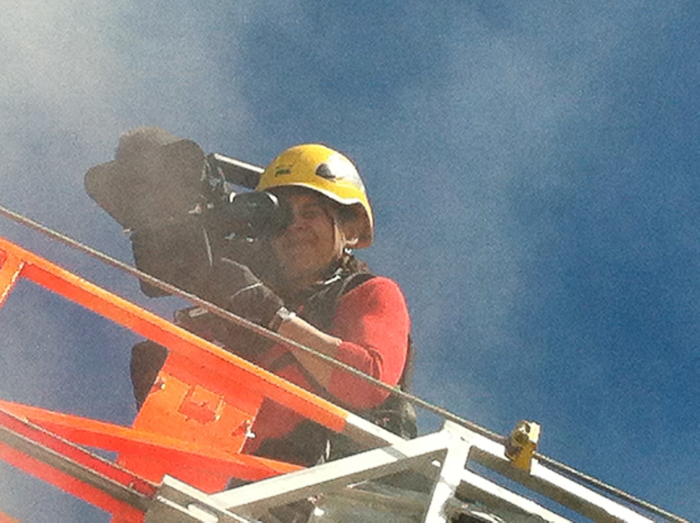
As far as the experience, I truly had a blast. The film took a lot longer to do than planned, so that caused some challenges afterwards, but it was a once in a lifetime experience that I’ll cherish all my life. These five women became friends, and I must confess that the sound of a fire truck is forever sweet to my ears.
What were some of the most memorable moments?
Filming a birth was a highpoint. By this time, I’d been well accepted by the team, so I could share the moment with them. The one big fire was impressive. I’d been waiting for this moment for six months so the fire crew was excited for me. Not to forget the humanity that I witnessed, firefighters helping people in distress. It was moving.
As a documentary filmmaker, tell me about your background.
I learned my trade at the National Film Board of Canada, started as a researcher, assistant director, and then director, producer, editor. I was blessed to work with legendary Canadian documentary filmmakers, Michel Brault being one of them. I learned by watching, assisting, and doing. When I started, we shot on Super 16mm; editing was done on a Steenbeck. I lived through the transition toward video. Later, Rick Blackburn and I started our own film production company. We’ve been going at it ever since, producing more than 25 hours of broadcast content. Documentary filmmaking is my passion. I do it all, from scriptwriting to directing to running camera, doing sound, editing, producing.
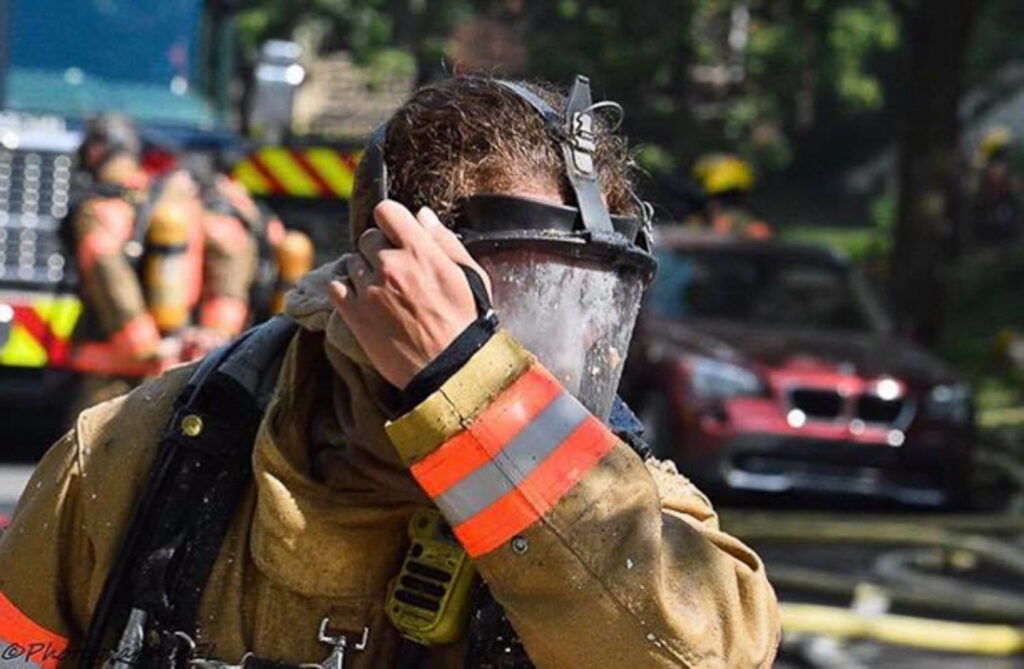
What would you say is unique about FIREWOMAN?
Being able to make an action film out of a documentary. Viewers said watching FIREWOMAN was like watching a fiction film, sitting on the edge of their seat, laughing, crying . . . real life can be bigger than fiction.
Were there any challenging moments during production?
The main challenge was to catch a big fire. We were determined from the start to showcase at least one of the characters fighting a big fire in order to demonstrate how capable these women are, but it is easier said than done. To put yourself between a firefighter and a fire takes good timing. Since you can’t predict the fire, you have to be with them at all time. You have to follow them wherever they go and always be ready to shoot. I was following two firefighters in two different fire halls working on 2 different shifts, which basically meant I worked all the time. What I thought would take two months, took six months. There was just no fire that summer in Montreal. I started shooting early May and got my fire at the end of October. It was physically demanding. I carried 50 pounds of film equipment on top of the firefighter’s bunker I wore for safety, up and down the fire truck all day long. It gave me a taste of what these women are up against physically.
What were some of the highlights of filming FIREWOMAN?
Pretending to be a firefighter for six months! I had the privilege to experience the unique world of fire safety – to go behind the walls and inside the truck; to walk into people’s homes, witness their tragedies, and get a sense of the camaraderie that ties the crew together in front of adversity.
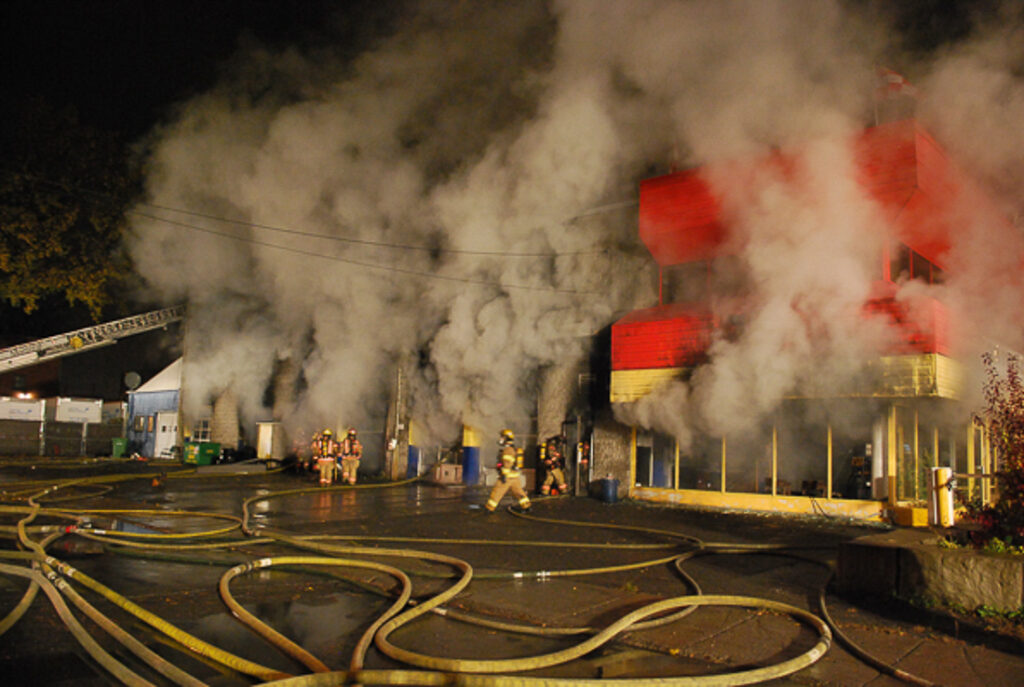
What were some of the obstacles?
The delicate subject of female firefighting. Some male firefighters were against having women in the ranks. Although they would never say it, it was felt. They didn’t appreciate the making of a film on female firefighters, rather than a film on firefighters. I had to be careful not to hurt their egos or else my characters would pay for it. But those guys were the exceptions. The majority of them were supportive.
On your next project what might you do differently and what might you do the same?
As a result of that experience, I love doing camera. I feel it provides me with a more direct relationship to the subject. I can explore ways of capturing reality without having to explain it. Another benefit is that I basically edit as I shoot, making sure I get the coverage I’ll need for the edit. And once in the editing room, I know the material implicitly.
How has Covid19 affected your production/post if at all?
We released FIREWOMAN in theaters March 13, 2020 following an extensive and positive media blitz, just to be shut down by Covid19 the next day. It then took 4 months for theaters to reopen. When we released the film again, in July, we clearly couldn’t benefit from our press campaign of months ago. We lost the momentum.
What advice could you give to a first-time documentary filmmaker?
Learn how to write. There is so much pitching to do in this industry before you can pick up a camera and shoot, you need to be able to express your vision on paper. And in a script. It’s an essential talent if you want to make it to the big leagues.
Is there is anything else you’d like to mention. If so, please do.
Thank you!
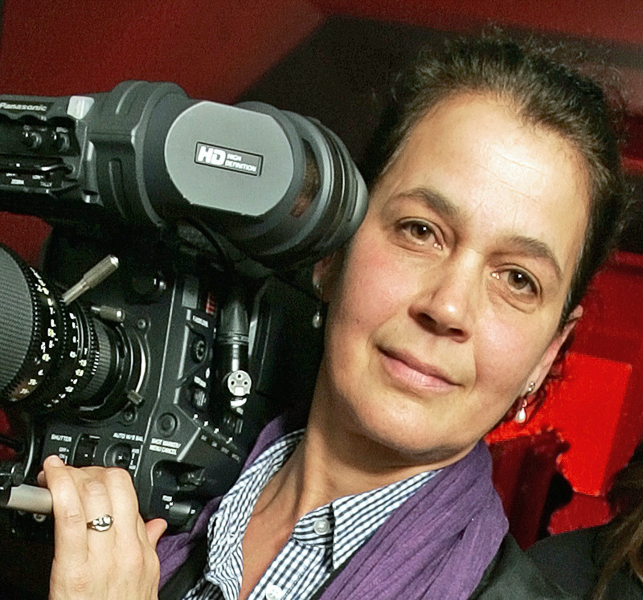
ABOUT The Director: Louise is a cinéma vérité filmmaker who writes, shoots, directs and edits all her own films. To practice her craft Louise founded Studio Morin Heights, a script-to-screen production house offering a complete 4K workflow including broadcast and digital cinema packaging. A product of the National Film Board of Canada, Louise’s list of film credits is a who’s who of documentary filmmakers in Canada and abroad. As a director, she has delivered over 25 hours of prime-time broadcast and theatrically distributed content. The recipient of multiple awards, Louise was described to be one of Canada’s foremost filmmakers by Telefilm Canada in 2017. Louise is a member of SARTEC, ARRQ and the Academy of Canadian Cinema & Television.
FIREWOMAN is currently screening at the Artemis Women in Action Film Festival (AWIAFF) through the month of May 2021. Get your all-access pass at artemisfilmfestival.com and watch this incredible film. FIREWOMAN just won Best Documentary – Action for AWIAFF 6th Edition Festival!




